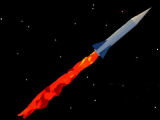 |
Explorer Post 1010 Lockheed Martin Exploring Program Rocket Body/Fins Notes |
 |
Explorer Post 1010 Lockheed Martin Exploring Program Rocket Body/Fins Notes |
 We have lots of
experience from last year and the results at the National competition.
We should be able to put our knowledge to use and get back to Nationals. We have lots of
experience from last year and the results at the National competition.
We should be able to put our knowledge to use and get back to Nationals.After some designs and the launch on October 21, we have decided to focus on BT-80 body tubes. They are inexpensive and parts are easily acquired. It gives us plenty of space for an egg, parachutes and electronics. The BT-70 last year was too small and we could not protect the egg sufficiently. Here are some early fin designs. We should decide on either 3 or 4 fins. This has a impact on the launch tower. In the past, we have had problems getting
the fins straight on the body. We should build a fin fixing gig.
See
http://www.vatsaas.org/rtv/construction/finjig.aspx for a design.
We are planning to use thin plywood for the fins. 1/16th plywood should be strong enough without too much weight. We may also try 3/32nd basswood. Fins should also have more than a straight cutout from fin material. They should have a more complex airfoil profile. There is a good discussion on fin design at http://www.apogeerockets.com/technical_publication_16.asp. One final piece of advice, the grain of
the wood needs to be parallel with the leading edge of the fin. The engine tube must extend past the end centering ring so you can tape the engine to the tube. The end centering ring should be flush with the end of the body to reduce the drag. You could also add a cone to eliminate more drag. The top centering ring should extend a
little below the top of the engine tube so you can insert a pin (or
something) as an
engine block. The engine tube should be no longer than the longest
possible engine. One initial thought was to use the release of a CO2 cartridge to retard the ascent. We could release the gas as we needed it, based on feedback from an altimeter. We decided to test the force of a CO2 cartridge. Here is a video of the force on our rocket scale. After some discussion about the weight of the cartridge and the valve, we decided this would be an unlikely solution to the problem. Our next idea was to use some form of air brakes. These flaps can be extended as the rocket approaches 850 feet. Here are some design pictures of the flaps retracted and then extended.
While we are designing this complicated rocket, one of our teams could use a simple rocket kit as a base for their rocket, much like the use of a Fat Boy last year. Some starting kits from Estes...
Here are some links to users of a Big Daddy...
|
|
Copyright 2007
Lockheed Martin Exploring Program Updated: April 2, 2007 |